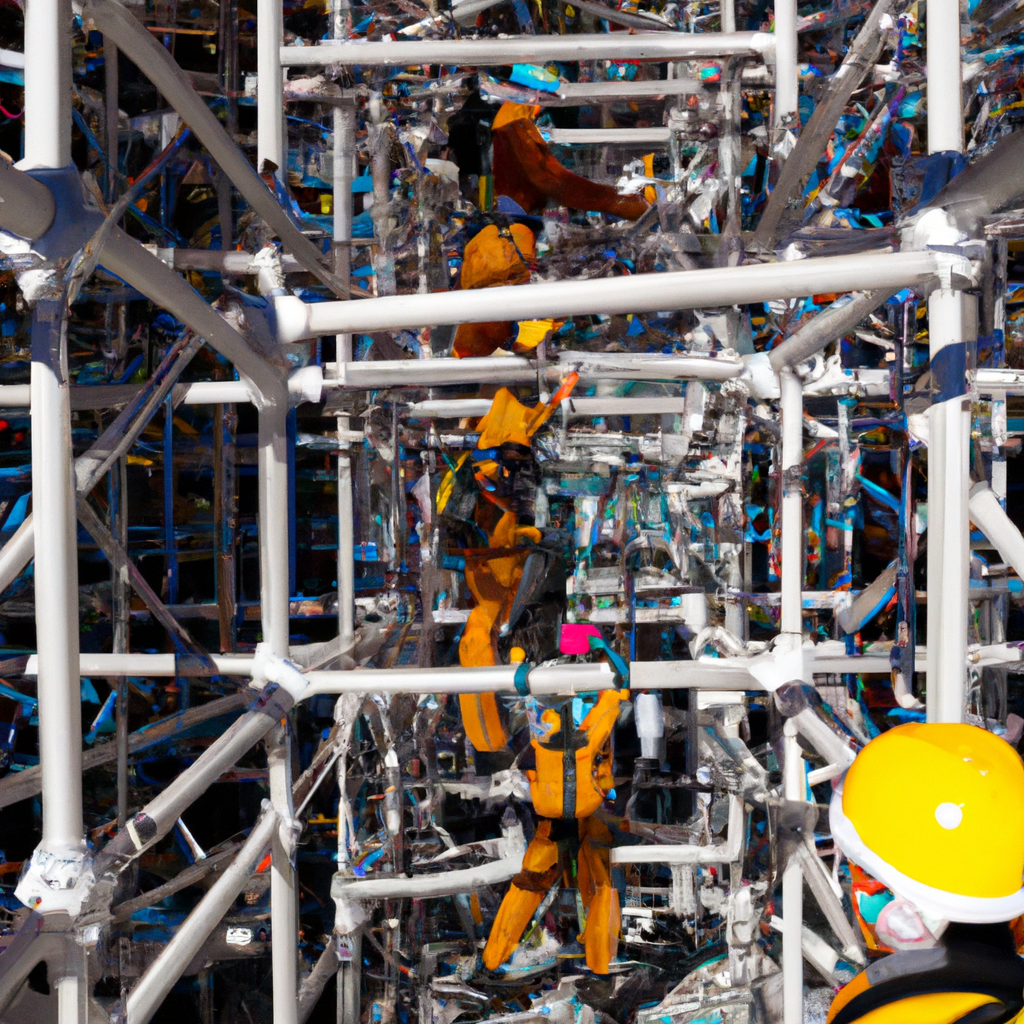Welcome to our comprehensive guide on the future of safety equipment in scaffold construction. In this article, we will explore the latest advancements and innovations in safety gear that are reshaping the industry. From cutting-edge technologies to ergonomic designs, we will delve into the details of how these advancements are enhancing worker safety, productivity, and efficiency. Join us as we uncover the future of safety equipment in scaffold construction and how it can benefit your projects.

The Evolution of Safety Equipment
Safety equipment in scaffold construction has come a long way over the years. Gone are the days when a hard hat and a harness were the only means of protection for workers at heights. With advancements in technology and a better understanding of safety requirements, the industry has witnessed a significant evolution in safety equipment. Let’s explore some of the key innovations that are paving the way for a safer work environment.
Smart Helmets: Protecting with Intelligence
One of the most exciting developments in safety equipment is the emergence of smart helmets. These helmets are equipped with built-in sensors and communication capabilities, enabling real-time monitoring of workers’ vital signs and environmental conditions. With the ability to detect factors like temperature, humidity, and even toxic gases, smart helmets provide early warnings and alerts to prevent accidents and ensure worker well-being.
Moreover, smart helmets can also facilitate communication between workers on-site, enhancing collaboration and coordination. This real-time data exchange significantly improves situational awareness and allows for prompt responses to potential hazards.
Exoskeletons: Augmenting Worker Strength
Exoskeleton technology has made remarkable strides in recent years, revolutionizing the way scaffold construction workers perform physically demanding tasks. These wearable devices provide ergonomic support, reducing strain and fatigue on the body while improving overall productivity.
By distributing the weight of heavy tools and materials across the exoskeleton, workers experience less physical stress, minimizing the risk of injuries and musculoskeletal disorders. Additionally, exoskeletons can enhance worker stamina, enabling them to work for longer periods without fatigue.
Drones: Aerial Inspections and Surveillance
Unmanned aerial vehicles, commonly known as drones, have become an invaluable tool for safety inspections and surveillance in scaffold construction. Equipped with high-resolution cameras and sensors, drones can access hard-to-reach areas and provide detailed visual data for analysis.
Using drones for inspections eliminates the need for workers to physically climb scaffolding, reducing the risk of falls and accidents. These aerial devices can quickly identify potential safety hazards, such as loose bolts or damaged components, allowing for swift corrective actions.
Virtual Reality (VR) Simulations: Training for Safety
Virtual Reality (VR) simulations have gained popularity as a training tool in various industries, including scaffold construction. By immersing workers in realistic virtual environments, VR simulations provide hands-on training experiences without exposing them to actual on-site risks.
Through VR, workers can practice assembling scaffolding, identifying potential hazards, and responding to emergency situations. This immersive training helps build muscle memory and improves decision-making skills, ensuring workers are well-prepared for real-world scenarios.
The Benefits of Advanced Safety Equipment
The implementation of advanced safety equipment in scaffold construction offers numerous benefits to both workers and project stakeholders. Let’s explore some of the advantages:
Enhanced Worker Safety
The primary objective of advanced safety equipment is to prioritize worker safety. With the integration of smart helmets, exoskeletons, drones, and VR simulations, the risk of accidents and injuries is significantly reduced. Workers can perform their tasks with confidence, knowing that they are protected by cutting-edge technology designed to keep them safe.
Increased Productivity
By reducing physical strain and fatigue, exoskeletons contribute to increased productivity on construction sites. Workers can work more efficiently and for longer durations without compromising their well-being. Additionally, the use of drones for inspections saves time and resources, allowing for quicker identification of issues and faster resolution.
Cost Savings
While the initial investment in advanced safety equipment may seem substantial, the long-term benefits outweigh the costs. By preventing accidents and injuries, project delays and associated expenses can be minimized. Moreover, the increased productivity resulting from the use of exoskeletons and drones can lead to overall cost savings in scaffold construction projects.
Regulatory Compliance
As safety regulations continue to evolve and become more stringent, the adoption of advanced safety equipment becomes a necessity for compliance. By implementing these technologies, construction companies demonstrate their commitment to providing a safe work environment for their employees. This proactive approach not only ensures compliance but also enhances the reputation and credibility of the organization.
Conclusion
In conclusion, the future of safety equipment in scaffold construction is promising. With the introduction of smart helmets, exoskeletons, drones, and VR simulations, the industry is witnessing a significant transformation in worker safety, productivity, and overall project efficiency. These advancements are empowering workers to carry out their tasks with confidence and reducing the risk of accidents and injuries.
As the demand for safer construction practices continues to grow, embracing these innovations becomes crucial for staying competitive in the industry. By investing in advanced safety equipment, construction companies can not only protect their workers but also reap the benefits of increased productivity, cost savings, and regulatory compliance.
The future of safety equipment in scaffold construction is here, and it is time to embrace the possibilities and unlock the full potential of a safer and more efficient construction industry.


